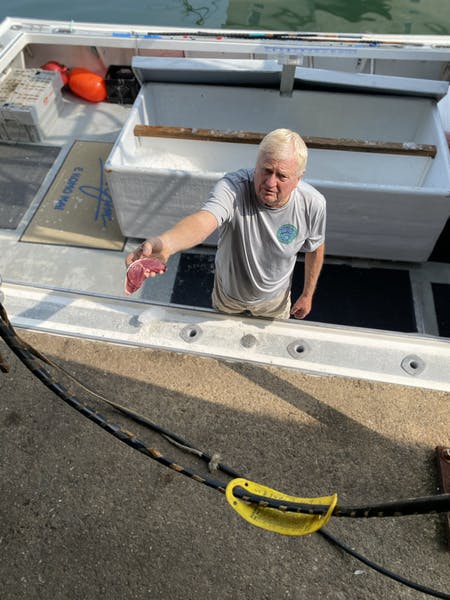
The Intricacies of Tuna Grading
How is tuna graded? We often hear the term “grade” thrown around when it comes to food. For beef, there’s prime, choice, select and so forth. Tuna is much the same and has four grades: #1 (highest), #2+, #2, and #3, and 5 categories that the fish is judged on: initial appearance; size and shape; color; texture; and fat content.
Once a fish is landed, it goes right on an ice, ideally a saltwater ice slurry to bring its temp down to just above freezing. Once landed, the head and tail are removed and the meat samples are gathered. Initial appearance and size and shape inspections are generally done immediately, color, texture and fat content are observed primarily through meat samples. Initial appearance indicates freshness. In our case, we always know the tuna is fresh since not only do we know the fishermen who are catching the tuna, we typically see it get landed at our buy station in Portland. For size and shape, generally speaking larger is better (over 60 pounds) as a larger fish will contain a higher fat content.
There are typically two meat samples taken, a small half-moon shaped sample from the smallest diameter of the fish, the tail and a core sample from right underneath the fin all the way through the belly. A metal instrument called a “Sashibo” is pierced into the flesh to extract a sample. Tuna meat is red, but the shade of red is what dictates its color score, the deeper the red and the more translucent the meat, the higher the quality (this is often referred to as color and clarity).. Texture - the finer the better. #1 grade tuna should have a fine and smooth texture, it should not be coarse or grainy. Lastly, fat content. Higher fat content means higher quality and better taste. Usually high fat content will be grade #1 tuna and sold to the sushi market.
The rest, as they say, is up to you. Select your cut (toro has the highest fat content and is considered the best), your recipe and then, enjoy! Looking for preparation ideas? We’ve lots of recipe ideas here.





